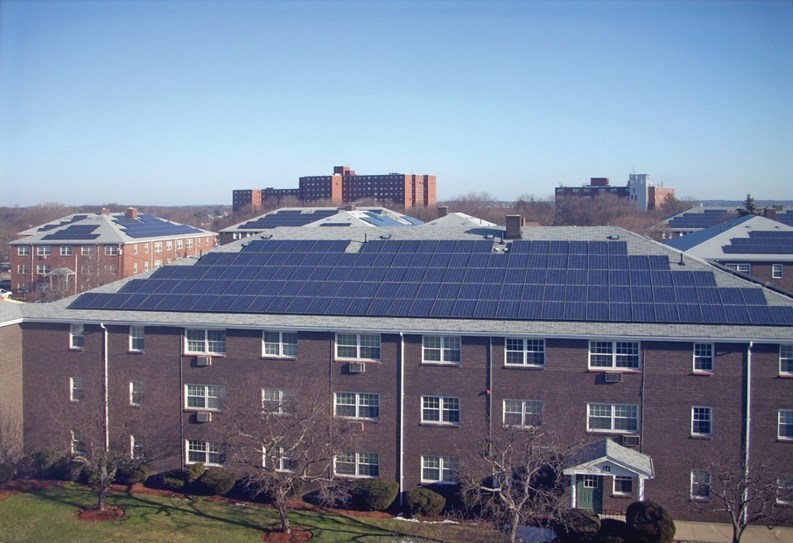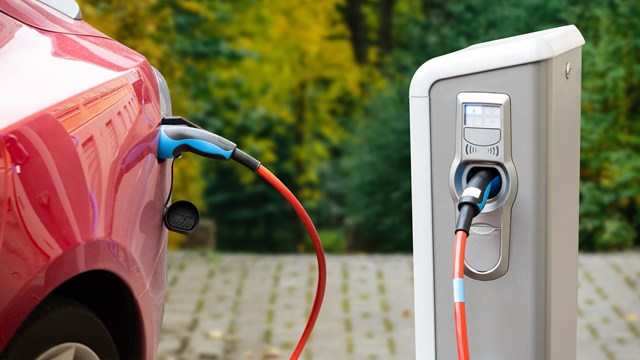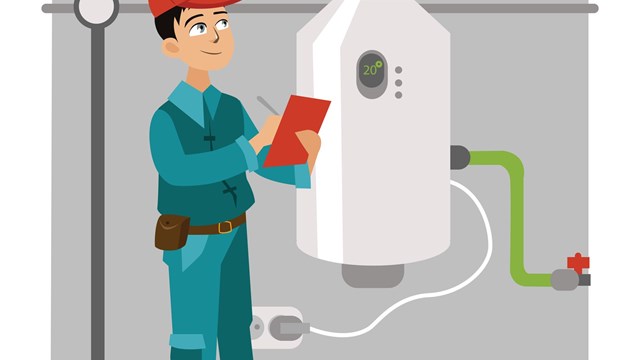Mom was right. Her admonition to “Turn out the lights when you leave the room!” is as valid today as it was a generation ago. And yet many co-op and condo buildings, while energy-conscious in so many ways, seem to feel it’s better to just leave the lights on – sometimes, 24/7.
Why? Well, the argument goes, it takes more energy, or produces more wear and tear, to start them up again than it does to just leave them burning.
And then there's the fashionable trend of using bamboo or cork for flooring, rather than traditional hardwoods, and replacing old-school incandescent light bulbs with new-and-improved models.
But do all these "greening" measures really do as much good as we like to think they do? Are buildings that encourage (or even mandate) that owners install lo-flow toilets and spirally light bulbs really saving themselves money? The answer isn't always clear-cut, say some pros.
On, or Off?
“It’s a popular myth that turning bulbs on and off will make them die faster,” says Nancy Hazard of Greenfield, Massachusetts, former director of the Northeast Sustainable Energy Association and a volunteer with Greening Greenfield.
The roots of that myth may well be traced to earlier days of the computer age, when experts opined that it was better to leave a computer running than to power it on and off — moves that, if nothing else, put a strain on the system’s mechanical components. Today, computers tend to drop into an energy-saving “sleep” mode when not in active use, as do a host of other electrical and electronic devices found in the average building.
Unfortunately, the advent of new energy-saving products has compounded some of the misguided ideas: Because the new compact fluorescent bulbs installed in a community use much less energy than the old incandescent bulbs, it’s okay to leave them on longer. You’re still saving energy, right?
“Maybe you should be thinking about what lights you really need,” Hazard says. “Do you just need a little light to get your keys out of your pocket and into the keyhole? Or do you need enough light for a party on the patio?” When swapping out bulbs, she suggests, homeowners and board members should think beyond “replacement” and really assess their needs. There’s a whole new generation of products out there, and thinking hasn’t always kept pace with innovation.
Bamboo or Bust
So if your kitchen floors are plain old linoleum or tile and you don't have a solar array on your roof, does that mean that you're out of step with the new environmentally friendly standards of the day? Not necessarily, say the pros.
"When people hear 'green,' a lot of times they think of bamboo flooring or hemp drapes or things like that,” says Mike Rogers, vice president of GreenHomes America, headquartered in California with an office in Princeton. “But really where you ought to be starting is with energy efficiency, the durability of the building, and the health and safety of the people living in it. If you put down bamboo flooring or organic drapes, but you have mold, or if there are unsafe conditions from lead paint or a backdrafting water heater, what the heck difference does the flooring make? It's not to say that those things aren't important and we shouldn't consider them, but what you really need to start with is how the building itself is performing."
Kirsten Thoft, an architect who renovated a condo in Princeton to achieve the National Green Building Standard's Emerald Level classification agrees. "I think that laypeople tend to think first about materials like 'Oh, we need to replace our floors, or we should get recycled counter-tops,' or something like that,” she says. "But the most important things that you can do to any building aren't sexy, and you don't even see them—which is part of the reason people overlook them. But the cost of heating and cooling and the amount of energy consumed doing those things, either oil or natural gas or electricity are huge, and easily reducible by getting an energy audit" and following its recommendations.
“We Can’t Do It”
“I think the biggest myth is thinking that because you live in a condo or other multi-family building, energy upgrades are difficult, if not impossible, to do,” says Gaelan Brown, vice president of marketing at GroSolar, a Vermont-based distributor and installer of solar energy solutions. “There are plenty of things that condos and condo owners can do,” he says.
"A lot of people believe they can just throw solar panels on their roof and that's going to make them green,” says Frank Dalene, co-founder of the Hamptons Green Alliance based in Long Island, “But it's more than that. It's taking a holistic view of the building, identifying areas that are wasteful. You should be looking at that first before you start supplementing your electrical usage with renewable energy, for example. Renewable energy is very expensive to install and there's steps that can be taken that will really give you a better bang for the buck."
Addressing waste is one thing, but greening a building or HOA's operations can extend to the types of products and methods community staff uses on a daily basis, says Robert Francis, CEO of Planned Companies, a Parsippany-based firm specializing in janitorial/maintenance and concierge services. In 2008 the company launched its own "Go Green" initiative, which called for the replacement of 95 percent of the company’s janitorial cleaning products with non-corrosive, biodegradable, less-toxic alternatives.
"We realized that it wasn't going to be just a fad," says Francis. "Green was here to stay, and there were a lot of benefits for our workforce, the air being breathed, the chemicals being used, and for our clients in terms of their tenants and residents and their budget. A big part of the initiative was looking at all the cleaning products and chemicals being utilized throughout our portfolios—residential, commercial and corporate—and changing to Green Seal 37 nontoxic, biodegradable products that the USGBC label as 'green.' There was no additional cost in changing to green from a cleaning product perspective. That was part A. From there, we [also talked] to different clients about automating their consumables—their supplies for the restrooms, their paper towels, hand soaps and so forth. You can reduce excess usage and waste there by automating paper towel dispensers or hand soap dispensers in a way that's not only cost effective, but saves a lot of wasted product."
Energy and management professionals alike recommend that any property considering a major energy project work with a knowledgeable and experienced consultant, and “every project requires at least one person who really has the motivation to see it through — in some cases, to relentlessly carry it through,” Brown adds.
“We’ve Done All We Can Do”
Condos built in the past couple of decades may well have insulated walls and double-pane windows, and over the past 20 years, many homeowners and associations took conservation-oriented steps. Tightening up the building envelope is a low-cost, but effective, means of saving energy — and one that many boards ignore. “People have heard that your building can be too tight and it’s not good,” Hazard says, “but unless you have a very new, super-insulated home, it probably is not tight at all.”
Another low-cost, often-overlooked source of potential savings is simply checking the settings and mechanical upkeep of your building's machinery and equipment, says Rogers.
"A lot of the buildings in the metro area have mechanical systems that are just in terrible disarray. Over the years, the controls on them, have stopped working properly. It's not uncommon to walk down the street in January and see open windows because people are trying to cool off. Some rooms are too hot, some rooms are too cold and that's just an enormous waste of energy and probably one of the least 'green' things that you can do. There are tremendous opportunities on the building performance side of thingauditor — one who arrives with a thermal imaging gun and a blower door. The uninsulated and air-leaking spots will be immediately obvious. “The science has improved astronomically in the last 30 years,” Hazard notes. Using the audit report as a guide, get out the caulk gun or hire a contractor to tighten up the envelope if necessary.
New Appliances Make us Green
As unit owners and boards have upgraded appliances and other electronics in their apartments and common areas over the years, they’ve ditched energy hogs and may feel oh, so very green.
But beware. Chances are that when you shut off your old television set, it actually went off — but with newer products, that isn’t necessarily so.
“The ‘phantom load’ is a big issue,” Brown says. “A lot of products today go into ‘ready mode’ and trickle juice even when you don’t need it.” One way to discover the drain your appliances and electronics — even brand-new ones — create is with a device called a “Kill-a-Watt.” Plug the device into an outlet, plug your appliance into it, and leave it in sleep mode for a whole day. “You may be surprised how much juice it’s using when it’s turned off,” Brown says.
When you buy new appliances, says Dalene, "One of the first appliances you want to change out and actually upgrade is your dishwasher. A dishwasher that was not Energy Star-rated is the greatest energy hog. The great thing about Energy Star is that it's a great example of a voluntary program actually working. It brought the entire industry up to what the Energy Star rating is for. It's a great thing, there's great stuff happening. Really, the awareness is what's important and that's what you are doing."
And finally, the pros stress that it's important for residents and administrators alike to be aware that going that extra distance toward greener operations doesn't have to cost an arm and a leg. "I think people are naturally skeptical," says Francis. "They thought the whole green movement would be a fad or a passing phase, or that it would go away. I think they thought there was a lot of promotional noise around it. And I think there's a myth that it's very costly. I think there are basic, smart, just intellectually sound things that people can do for buildings that are no more costly than the standard products being used today; yet they have real tangible benefits for the building. It's surprising when people are able to do that and see the savings. I think it surprises people in a positive way."
Pat Gale is the associate editor of New England Condominium magazine, a Yale Robbins, Inc. publication. Additional reporting by David Chiu.







Leave a Comment